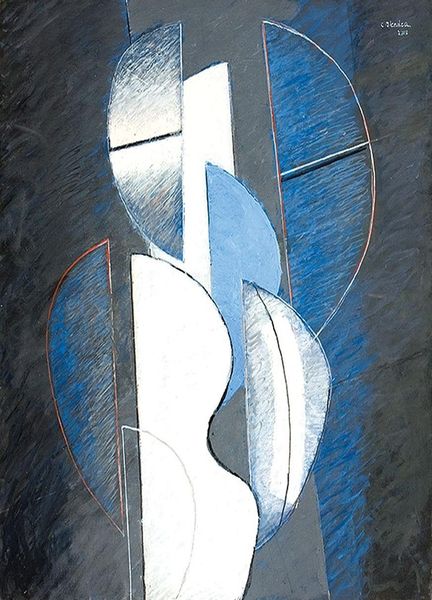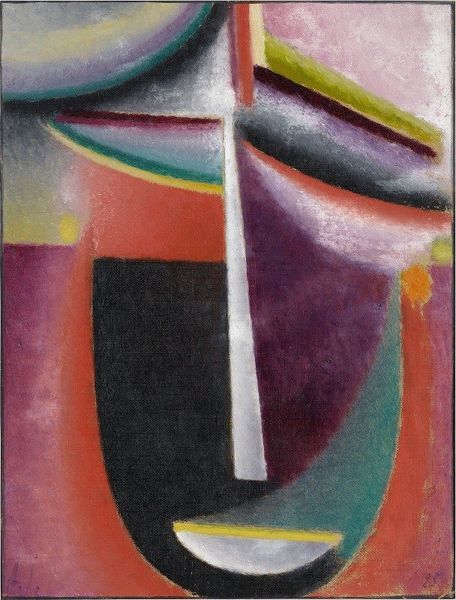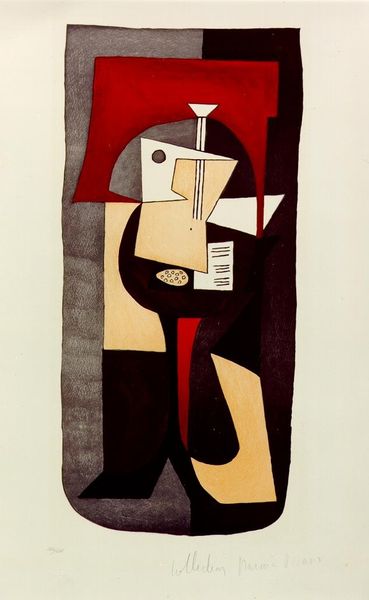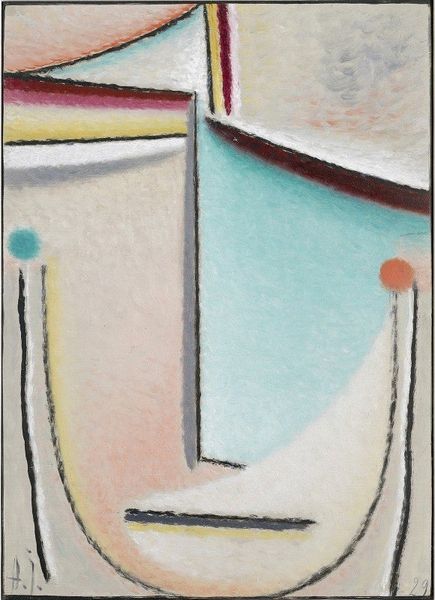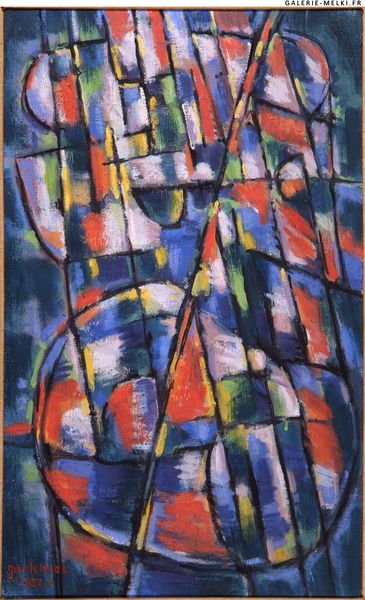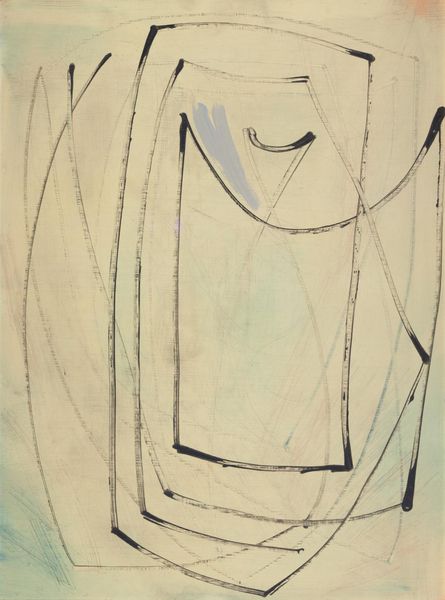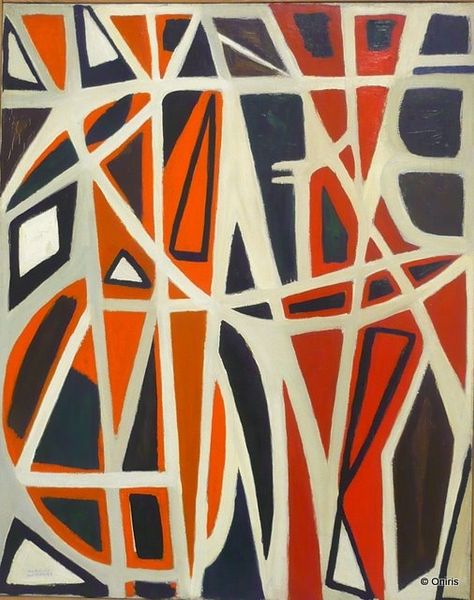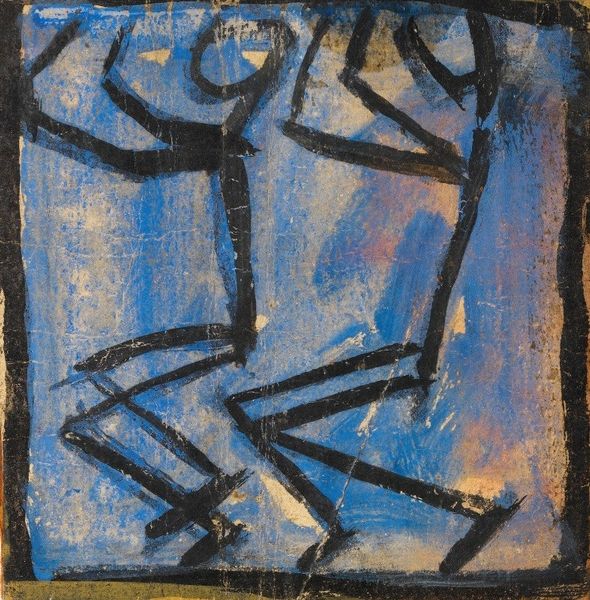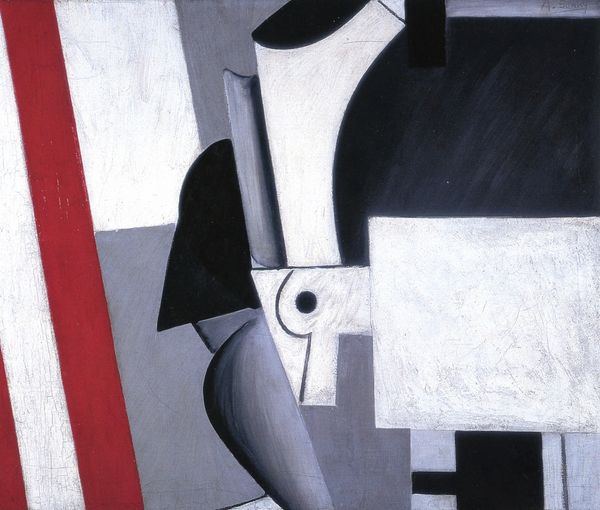
Dimensions: unconfirmed: 1778 x 1016 mm frame: 1860 x 1047 x 45 mm
Copyright: © The estate of Sir Terry Frost | CC-BY-NC-ND 4.0 DEED, Photo: Tate
Editor: Here we have Sir Terry Frost’s "Black and White Movement," a dynamic, monochrome piece. The crescent shapes really catch the eye, but I'm curious about their significance. What do you see in this piece? Curator: The repetition of the crescent evokes cycles, phases of the moon perhaps. Black and white, too, are potent symbols – absence and presence, darkness and light. How does this interplay make you feel? Editor: I see a push and pull, a conversation, and maybe some tension? Curator: Precisely. Frost was deeply interested in the push and pull of abstract forms. Do you think the title is descriptive or misleading? Editor: I think it works. It's more than just a description; it suggests energy, a constant shifting between opposites. Curator: Indeed. It’s a good reminder of the symbolic power that abstract forms can hold, even without any clear referent. Editor: I'll never look at abstract art the same way again!
Comments
tate 8 months ago
⋮
http://www.tate.org.uk/art/artworks/frost-black-and-white-movement-t06607
Join the conversation
Join millions of artists and users on Artera today and experience the ultimate creative platform.
tate 8 months ago
⋮
Terry Frost was based in St Ives, a harbour town and a centre for abstract art. There he made a series of works inspired by the boats in the harbour, in which diagonal and curving lines intersect. These lines echo the shapes of the boats and their rocking motion, the curves of the ropes that secured them, the arcs of the swaying masts and the small waves coming into shore. Frost was associated with a group of ‘Constructionist’ artists committed to non-representational art. He and they frequently based works like this on geometrical proportions such as the Golden Section. Gallery label, February 2010


